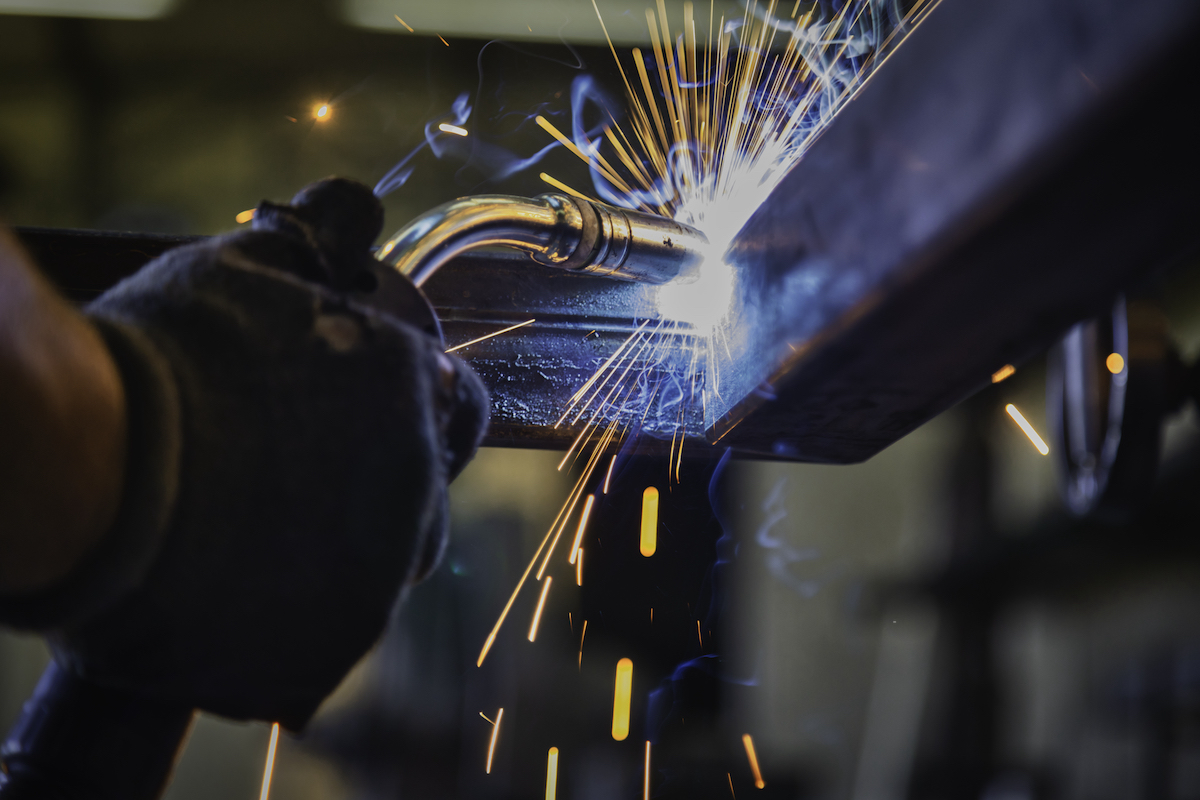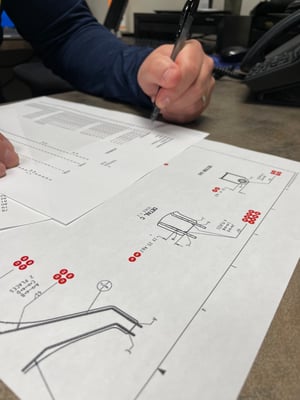The Importance of Weld Mapping in Precision Welding and Fabrication

Remember the days of going on a road trip and trying to figure out the best route using a paper map? There was often no way to know the best way to get from point A to point B. Today, we have GPS units that plot out every turn and advise the best route to take.
These examples are analogous to technical drawings and weld mapping in the precision welding and fabrication industry. How so?
Technical drawings of fabrications might be viewed as the map showing precise measurements, landmarks, and the big picture view of the finished product. The weld map, on the other hand, can be seen as the GPS, a step-by-step guidance system that helps fabricators navigate where each weldment and weld joint should be from start to finish.
Analogies aside, it’s important to understand more deeply what weld mapping is, its role, and why precision metal fabricators leverage this process to ensure efficiency, traceability, and accurate results.
What is a Weld Map?
A weld map is an extension of a technical drawing that outlines the number of welds, the types of weld joints, and their locations on a fabrication. The weld mapping process also documents important information associated with the project in the form of a weld log. This documentation is similar to a spreadsheet and accompanies the weld map to show who worked on the piece, what was done, and in what sequence, along with other information.
 Weld Map Specifications and Weld Logs
Weld Map Specifications and Weld Logs
A weld map drawing indicates more than just the number and location of welds. For a welder to perform a repeatable process from one project to another requires extensive documentation of the following data:
- Weld number/locations
- Type of joints (butt, bevel, corner, lap, tee, etc.)
- Size and thickness
- Welding procedure (GMAW/MIG vs. GTAW/TIG vs. CAW, etc.)
- Materials and filler materials
- Fit and fit checks
- Welder name
- Date/time of action
- Area(s) for nondestructive testing (NDT)
- Inspector and inspection date
Because of the criteria included in weld maps and supporting documentation, a competent and experienced team may work together to develop the plan. Engineers, quality control specialists, and welders typically collaborate to determine the best path toward success and will leverage specialized software.
Why Use Weld Mapping?
One of the main reasons to use a weld mapping process is to help ensure quality, traceability, and repeatability from one project to the next. It also helps coordinate workflows and schedules for welders, inspectors, and NDE (nondestructive examination) hold points.
Once in production, welders must adhere to the parameters noted in the weld map or risk nonconformance. Not complying with the weld procedure could also result in weld cracking or distortion.
The more complex and intricate a fabrication, the more necessary weld mapping becomes. If a company builds 10 complex electrical enclosures for the Department of Defense, for example, they need to ensure that each unit is identical and follows the same procedures to arrive at the same end result. The only way to accomplish identical results for critical applications is to follow identical processes for each, and a weld map helps ensure that type of conformance.
Company and welder certifications may also require that a fabricator maintains such documentation. Many customers, especially those who contract for the DoD, require weld mapping documentation as part of their Quality Data Package (QDP) reports. These reports help provide an audit trail of the production process to ensure compliance.
Any documentation that’s required as part of completed project, including weld maps and logs, should be identified up front as part of the RFQ process to ensure accurate quotes and deliverables. Be sure to download our checklist outlining other commonly missed RFQ items.
Fox Valley Metal-Tech has extensive experience performing work for the DoD and is proficient in developing detailed weld maps, QDPs, and other critical documentation. Plus, we have a team of highly skilled and certified welders who are dedicated to maintaining compliance with the strictest procedures and tolerances.
Contact our team of fabrication experts today to talk through your next projects and its unique parameters.
